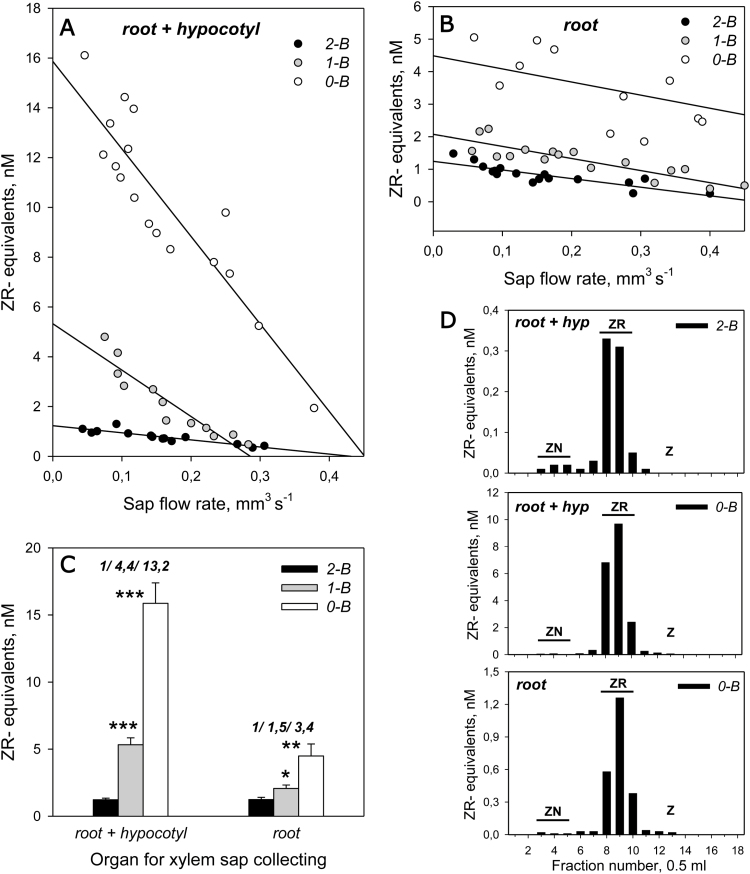Fig. 4.
Concentrations of tZ-type CKs in the xylem sap from root plus hypocotyl (A) or from root alone (B) as a function of sap flow rate in 10-day-old 2-B, 1-B, and 0-B pea seedlings. (C) Summary diagram of xylem CK levels extrapolated to null sap-flow rate from data in (A) and (B) with the ratios of 2-B/1-B/0-B values shown above the bars. (D) Immunohistogram of the reactivity of anti-ZR antibodies against the Toyopearl HW 40F column-separated fractions of xylem sap. Plants were prepared as in Fig. 1 at day 8, and two days later xylem sap samples were taken by cutting off the roots, with hypocotyl (A) or without (B). Xylem sap was collected for 30 min under reduced pressure. Sap samples from 2–4 plants displaying similar sap flow rates were pooled and subjected to ELISA. Values are expressed in ZR equivalents. For each treatment (A, B), the relationship was fitted with linear regression giving P-values of ≥0.998 at α=0.05 for all variants, except for 0-B plants in (B), where P=0.739. The values in (C) extrapolated to null sap-flow rate are closely related to xylem CK levels in vivo given near-zero transpiration rates (<0.01 mm3 s–1) previously observed in 10-day-old pea seedlings by Kotov and Kotova (2015). Asterisks indicate statistically significant differences compared with 2-B plants: *P<0.05, **P<0.01, ***P<0.001. In (D), the column chromatography of xylem sap was performed using PBS (pH 7.4) as eluent buffer. Fractions were analyzed by ELISA; the elution of CK standards is indicated by horizontal bars: Z, t-zeatin; ZN, zeatin nucleotide; ZR, zeatin riboside.

